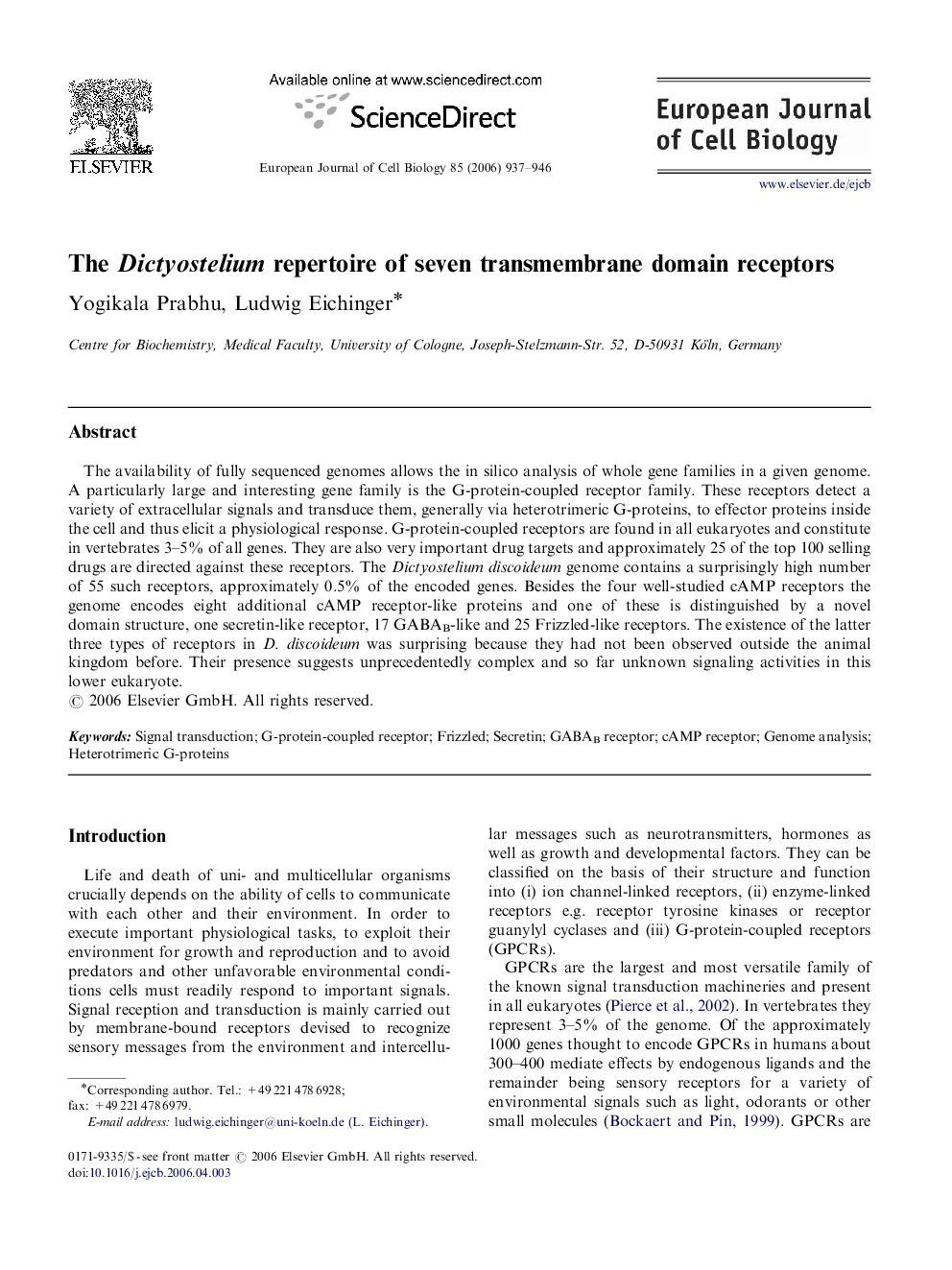| Article ID | Journal | Published Year | Pages | File Type |
|---|---|---|---|---|
| 2178980 | European Journal of Cell Biology | 2006 | 10 Pages |
The availability of fully sequenced genomes allows the in silico analysis of whole gene families in a given genome. A particularly large and interesting gene family is the G-protein-coupled receptor family. These receptors detect a variety of extracellular signals and transduce them, generally via heterotrimeric G-proteins, to effector proteins inside the cell and thus elicit a physiological response. G-protein-coupled receptors are found in all eukaryotes and constitute in vertebrates 3–5% of all genes. They are also very important drug targets and approximately 25 of the top 100 selling drugs are directed against these receptors. The Dictyostelium discoideum genome contains a surprisingly high number of 55 such receptors, approximately 0.5% of the encoded genes. Besides the four well-studied cAMP receptors the genome encodes eight additional cAMP receptor-like proteins and one of these is distinguished by a novel domain structure, one secretin-like receptor, 17 GABAB-like and 25 Frizzled-like receptors. The existence of the latter three types of receptors in D. discoideum was surprising because they had not been observed outside the animal kingdom before. Their presence suggests unprecedentedly complex and so far unknown signaling activities in this lower eukaryote.
